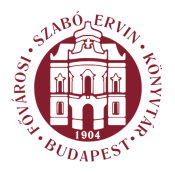Hajós György: Heroes' Square - Our Budapest (Budapest, 2001)
Stedelijk Museum in Amsterdam and the Narodniho Musea (1885-1890) in Prague. For that reason, the jury of evaluating the tenders included Weissmann, the designer of the Amsterdam Stedelijk Museum, the Swedish architect Skjöld Nekelmann of Karlsruhe and the Privy Councillor for architecture Ihne from Prussia, as well as noted Hungarian architects, painters, sculptors and museum directors. Nine tenders had been entered by the deadline of March 1899. The jury awarded first prize to the work of Samu Pecz by majority vote, the second prize was unanimously given to Albert Schickedanz and Fülöp Herczog’s mutual design, the third prize went to Aladár Arkay and designs prepared by Artúr Meinig were purchased. In its ruling the jury explained that none of the entries fully satisfied the requirements, but the first and second prize winning designs could be implemented without any modifications. Each of these two envisaged a building in a Classical style with Neo-Renaissance overtones. Samu Petz would not turn the main entrance toward the square but would have them open onto Dózsa György út and the City Park, which is why its orientation was less satisfactory. Designs by Schickedanz and Herczog would have their main faqade face the portico of the, by then operational, Exhibition Hall, thereby giving the square a more uniform appearance. The internal arrangement of its spaces also suited the building better for its function as a museum. Forgoing the invitation of further tenders, the minister of religion and culture commissioned Albert Schickedanz and Fülöp Herczog to finalise their designs, whereby the shaping of the entire square was left to virtually the same people. Work on the two blocks, each different from the other, was begun with the construction of the section nearest the Zoo on 1 August 1900. The work was undertaken by the firm of Géza Majorossy, who had also built the structures of the Academy of Music and the church on Szilágyi Dezső tér, among others. The topping-out ceremony was held at the beginning of June 1901, which meant that it took less than a year to erect the structural frame of the building. Now that the institution could be moved into the completed unit and out of rooms 46
